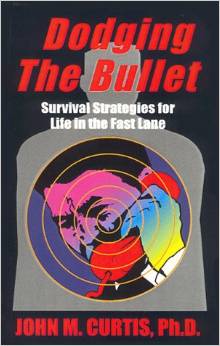Taking the ride on their lives on 49-year-old billionaire Elon Musk’s Crew Dragon spaceship, NASA Astronauts 50-year-old Bob Behnken and 54-year-old Doug Hurrley described the harrowing experience of reentering the earth’s atmosphere. Feeling like they were both hit with sledgehammers, during the 12 minute re-entry burn in which the shiny white capsule entered the friction of the ionosphere, with exterior temperatures scorching the capsule’s heath shield, reach temperatures up to 3,500 degrees Fahrenheit. When Behnken and Hurley splashed down into the calm Gulf of Mexico, it ended what seemed like the ride of their lives. “It came alive,” Behnken said, referring to the 12-minute burn in which Crew Dragon slowed with SuperDraco thrusters into the earth’s atmosphere. “It doesn’t sound like a machine, it sounds like like an animal coming through the atmosphere,” Behnken said.
What Behnken and Hurley experienced was precisely what goes on the Russian Soyuz spacecraft, also acorn-shaped like Musk’s Crew Dragon capsule. By the time Dragon was pulled out of the Gulf, it looked like a toasted marshmellow, blackened by the extreme heat of reentry. When the 12-minute burn was complete, Dragon had dropped in speed from 17,000 mph to 350 mph, the kind of deceleration bound to create a whiplash. “It was a pretty significant jolt,” Behnken said, unlike the retired Space Shuttle, the vehicle last flown by Behnken and Hurely in 2011. Given Crew Dragon’s shape and weight, it was very different than the 4.4 million pound Space Shuttle, a far larger vehicle than Crew Dragon’s 26,577 pounds. When it comes to space flight, bigger is better, at least when it comes to a smooth ride. Musk has nothing to apologize about for the bumpy ride in-and-out of space.
Once the 12-minute burn was complete, two sets of parachutes deployed slowing Dragon down to 350 mph, before the next four parachutes deployed. Behnken described the deceleration from the parachutes as “very much like getting hit in the back of the char with a baseball bat.” “It was a pretty significant jolt,” Behnken said, describing the same experience that happens on the Russian Soyuz. By the time Dragon deploys its four parachutes at 18,000 feet, decelerating the capsule to 15 mph, the ride calms down until eventual splashdown. Hurely called the Dragon mission “flawless,” ready to sign up for another go-around. No matter how rough the reentry, Behnken and Hurley know that Musk’s Dragon capsule enters space and returns just as expected, nothing like the 4.4 million pound Space Shuttle. Musk originally designed the Crew Dragon to land on a remote barge just like the Falcon 9 rocket returns from space.
Musk beat Boeing Space Systems Starliner ST 100 spacecraft into space, despite all the setbacks faced along the way. Whatever the delays getting to space, its was all worth it, getting the U.S. off the ground with manned space operations, no longer dependent on flying Soyuz for about $81 million one-way. Musk hopes to ferry astronauts to the International Space Station fro about $55 million one-way, while Boeing’s ST 100 expects to charge about $70 million one-way. Whether it’s SpaceX or Boeing’s ST 100, NASA astronauts must be prepared for the same bumpy ride in-and-out of space, nothing like the old Space Shutte. Whether Musk continues water landings much like NASA’s Mercury, Gemini and Apollo spacecrafts, is anyone’s guess. Judging by the way he returns his Falcon 9, reusable rockets on a drone barge, you can expect him to pull off the same feat with Crew Dragon.
Musk said at a pres conference Sunday, Aug. 2 that the Dragon’s Demo-2 mission proved the viability of commercial U.S. space flight. From launch to splashdown, Falcon 9 and Dragon performed flawlessly, with Hawthorne, Calif.-based SpaceX controlling every phase of the flight, leaving NASA astronauts to just go along for the ride. Behnken talked about the roller coaster exit-and-reentry, something that goes with the territory with acorn-shaped spaceships. Musk said he’s all in to ferry NASA astronauts on the Artemis mission to the moon in 2024 or before. Envisioning a permanent space station on the moon, Musk hopes to use the moon as a launching pad to Mars Musk expects the first non-crewed missions to mars happening in 2022 while a manned Mars expedition slated for 2024. Whether those deadlines happen is anyone’s guess. Crew Dragon was delayed by at least four years.
Competing Crew Dragon Demo-2, the sky is the limit for the next four-astronauts launch slated for the end of September. Musk sees a multi-planetary operation, where the U.S. no longer earth-bounded by a lack of a useable vehicle. Commenting about SpaceX’s successful mission, 45-year-old Administrator James Bridenstine said NASA no longer was in the spaceship-building business, content to provide astronaut development and training together with mission designs and concepts. Bridenstine is perfectly content to leave the spacecraft-building business to private contractors like SpaceX and Boeing. Like Musk has done with Tesla Motors, he proved he can build a better spaceship to ferry astronauts to the ISS. When he moves the Mars mission, the Musk’s Mars Starship will become the next generation spacecraft capable of going to the Red Planet and beyond.



